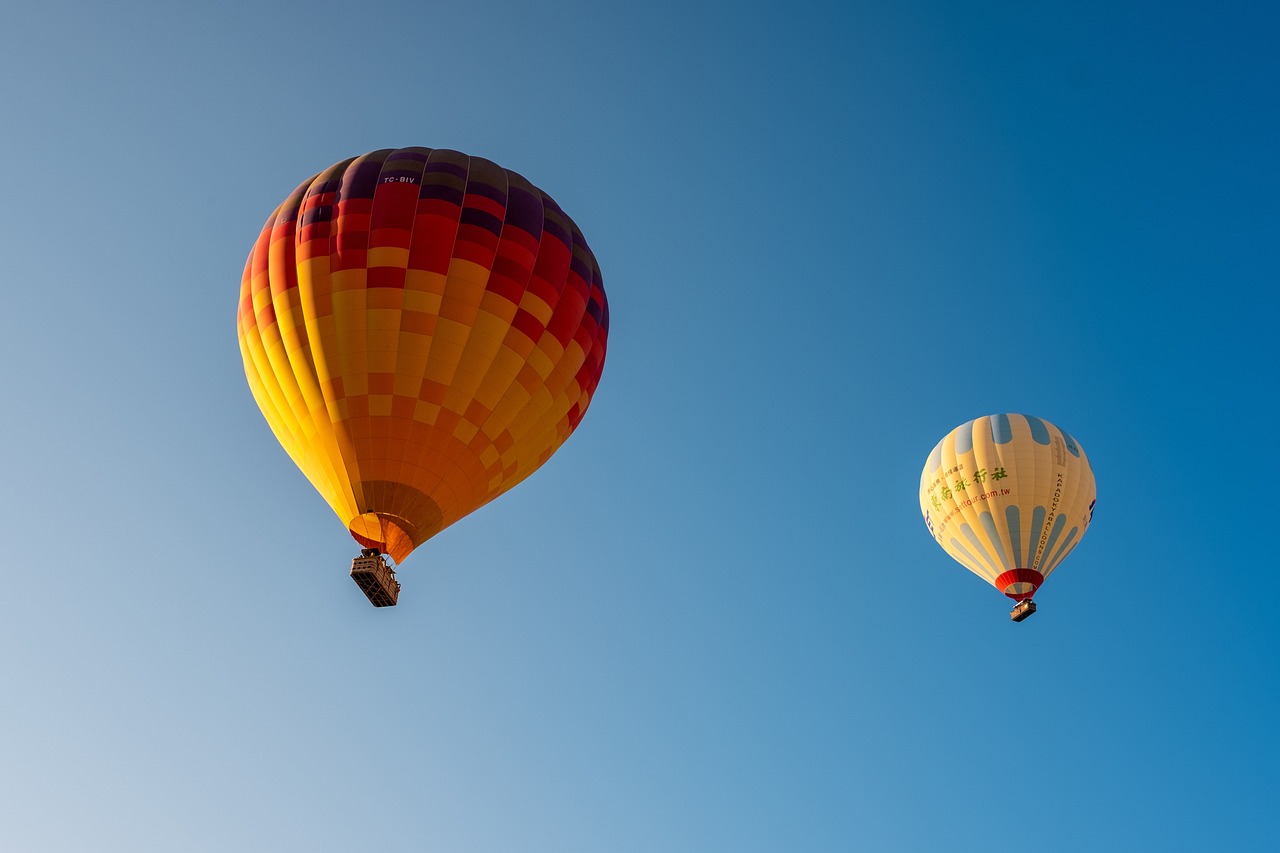Capturing the breathtaking beauty of a hot air balloon ride is an exhilarating experience, especially when using an action camera. This guide will provide you with essential tips and techniques to ensure that your footage is not only stunning but also memorable.
Action cameras are specifically designed for adventure seekers. Their compact and lightweight nature allows for easy handling, while features like high-resolution recording and stabilization ensure that you capture every moment in stunning clarity. Whether you are soaring high above picturesque landscapes or gliding gently with the wind, an action camera is your best companion.
When choosing an action camera, consider key factors such as:
- Resolution: Look for cameras that offer at least 1080p, with 4K being ideal for capturing fine details.
- Stabilization: Optical or electronic stabilization can make a significant difference in the quality of your footage.
- Battery Life: Longer battery life is essential for extended flights, so opt for models known for durability.
To enhance your filming experience, consider investing in the following accessories:
- Mounts: Use various mounts to secure your camera in different positions.
- Extra Batteries: Always carry additional batteries to avoid missing key moments.
- Protective Cases: Keep your camera safe from potential damage during the flight.
Preparation is crucial. Ensure your camera is fully charged, all settings are adjusted, and that you have enough storage space. Familiarize yourself with your camera’s features to maximize its potential during the flight.
Adjust your camera settings to suit the aerial environment:
- Resolution: Set it to 4K for the best quality.
- Frame Rate: A higher frame rate (60fps) can capture smooth motion.
- Field of View: Choose a wide field of view to capture expansive landscapes.
Stability is key to great footage. Explore various mounting techniques such as:
- Using a chest mount for steady hands-free filming.
- Attaching your camera to the balloon’s structure for fixed shots.
The takeoff and landing phases are unique opportunities to film. Position your camera to capture these moments while ensuring your safety and that of others on board.
Utilize techniques like panning and tilting to create dynamic shots. Framing your shots to include both the balloon and the stunning landscapes below can add depth to your footage.
Editing is where your footage comes to life. Use editing software to cut unnecessary clips, add transitions, and enhance colors to create a cohesive and visually appealing video.
Once your video is ready, share it on platforms like YouTube or Instagram to inspire others. Utilize hashtags and engaging captions to reach a wider audience.
Safety is paramount when filming from a hot air balloon. Always follow the pilot’s instructions, secure your camera properly, and be aware of your surroundings to ensure a safe experience.
Avoid common pitfalls such as forgetting to check your battery life, not securing your camera, or failing to adjust your settings for changing conditions. Being aware of these can help you achieve optimal results.
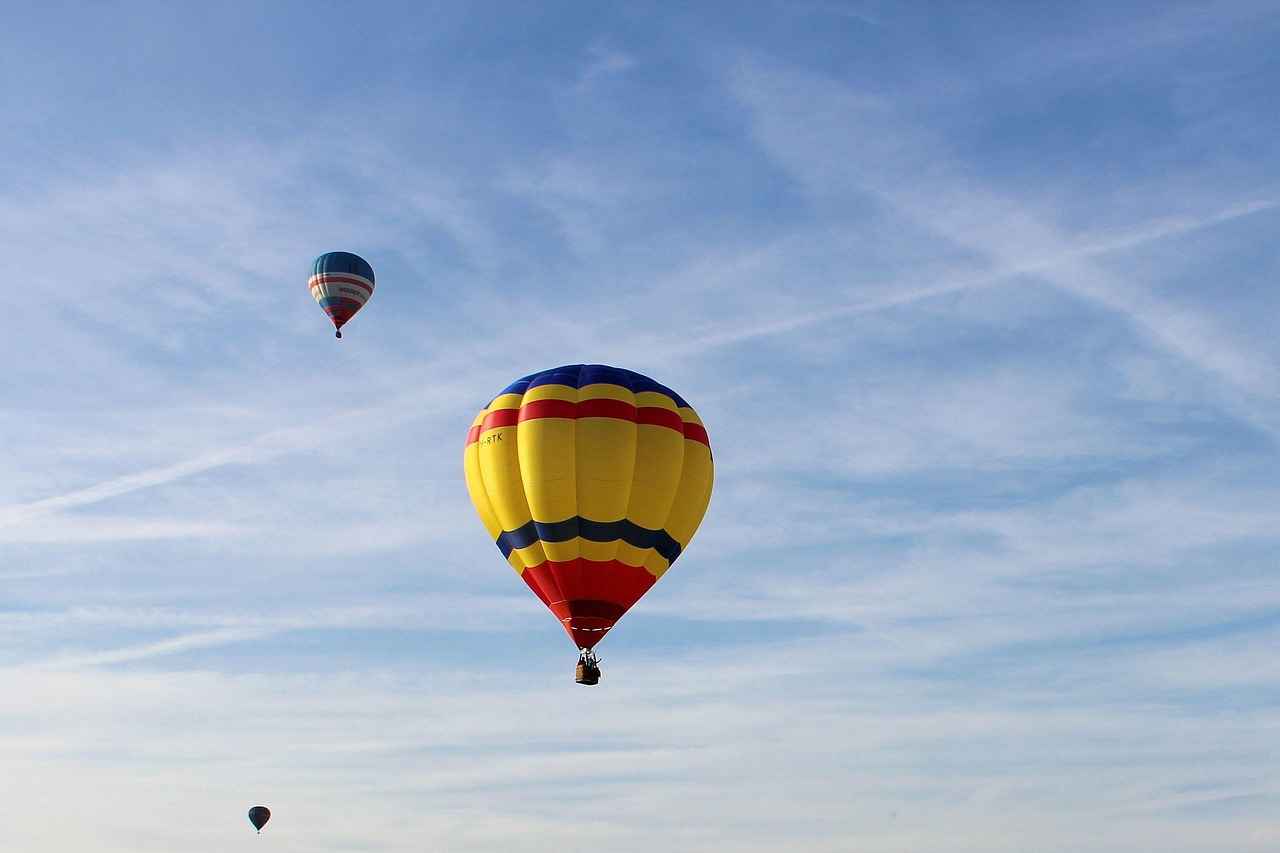
Why Use an Action Camera for Hot Air Balloon Rides?
When it comes to capturing the magic of a hot air balloon ride, action cameras stand out as the perfect choice. These devices are not just compact and lightweight; they are also built to withstand the rigors of adventure, making them ideal for this unique experience. Let’s explore why action cameras are a fantastic option for filming your hot air balloon journey.
- Portability: One of the most significant advantages of action cameras is their compact size. You can easily fit them into your pocket or a small bag, ensuring that you have your filming equipment ready without the bulk of traditional cameras.
- Durability: Designed for extreme conditions, action cameras are often waterproof and shockproof. This resilience allows you to focus on filming without worrying about damaging your gear due to wind or unexpected weather changes.
- Wide-Angle Lens: Many action cameras come equipped with a wide-angle lens, which is perfect for capturing the expansive landscapes and stunning vistas you’ll encounter during your flight. This feature allows you to frame breathtaking aerial views effortlessly.
- High-Quality Video: Action cameras typically offer high-resolution video recording capabilities, often up to 4K. This ensures that the footage you capture is crisp and clear, allowing you to relive the experience in vivid detail.
- Stabilization Features: Advanced stabilization technology helps reduce the effects of vibrations and shakes, which is particularly beneficial when filming from a moving hot air balloon. This results in smooth, professional-looking footage.
- Versatile Mounting Options: Action cameras can be mounted in various ways, enabling you to experiment with different angles and perspectives. Whether you want to attach it to the balloon’s basket or wear it on your head, the possibilities are endless.
In addition to these features, using an action camera allows for a more immersive filming experience. You can capture not only the breathtaking scenery but also the exhilarating moments shared with friends and family. The lightweight nature of these cameras means you can film without feeling weighed down, allowing you to enjoy the ride fully.
Furthermore, many action cameras come with built-in Wi-Fi or Bluetooth, enabling you to easily share your adventures on social media or stream live footage. This connectivity allows you to engage with your audience in real-time, sharing the thrill of your hot air balloon ride as it unfolds.
In summary, action cameras are an excellent choice for documenting your hot air balloon adventure. Their portability, durability, and advanced features make them ideal for capturing both the stunning views and the unforgettable moments that come with flying high above the ground. With the right action camera in hand, you can ensure that every breathtaking moment is preserved for years to come.
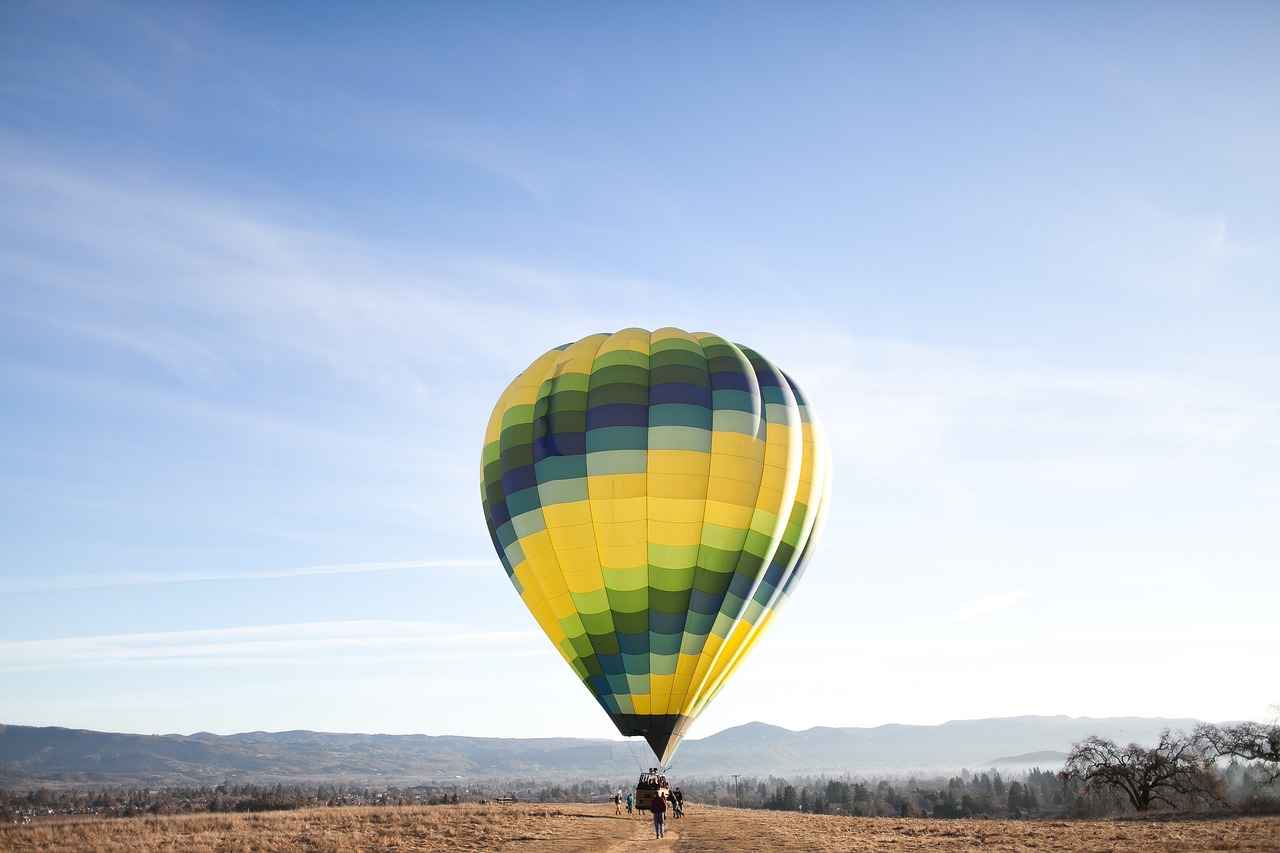
Choosing the Right Action Camera
When it comes to capturing the breathtaking beauty of a hot air balloon ride, is essential. The quality of your footage can significantly impact how you relive the experience and share it with others. Therefore, several key factors should be considered to ensure you make an informed decision.
Resolution plays a critical role in the clarity of your videos. Most modern action cameras offer resolutions ranging from 1080p (Full HD) to 4K. For those who want to capture every detail of the stunning landscapes below, a 4K camera is recommended. This higher resolution allows for more flexibility during editing, as you can crop or zoom without sacrificing image quality.
Stabilization is another crucial factor when filming from a hot air balloon. The gentle swaying and movement of the balloon can lead to shaky footage. Look for cameras that offer advanced stabilization features, such as electronic image stabilization (EIS) or mechanical gimbals. These technologies help create smooth, professional-looking videos, even in challenging conditions.
Battery life is often overlooked but is vital for extended filming sessions. Hot air balloon rides can last anywhere from 30 minutes to several hours, so you want a camera that can keep up. Check the manufacturer’s specifications for battery life and consider purchasing additional batteries or a portable charger to ensure you don’t miss any moments.
Besides resolution, stabilization, and battery life, consider other features that may enhance your filming experience. For example, waterproofing can be beneficial if you’re filming in varying weather conditions. Additionally, a camera with Wi-Fi or Bluetooth connectivity allows for easy sharing and remote control, giving you more flexibility in capturing shots.
Given the confined space of a hot air balloon, the size and weight of your action camera also matter. Opt for a lightweight and compact model that won’t be cumbersome to handle. This will allow you to maneuver easily and capture different angles without feeling restricted.
Finally, consider your budget. Action cameras can range from affordable to high-end models. Determine what features are most important to you and find a camera that fits your needs without breaking the bank. Remember, investing in a quality camera can make a significant difference in the quality of your footage.
In conclusion, selecting the right action camera involves careful consideration of various factors, including resolution, stabilization, battery life, and additional features. By prioritizing these aspects, you can ensure that you capture stunning footage during your hot air balloon adventure, allowing you to relive the experience for years to come.
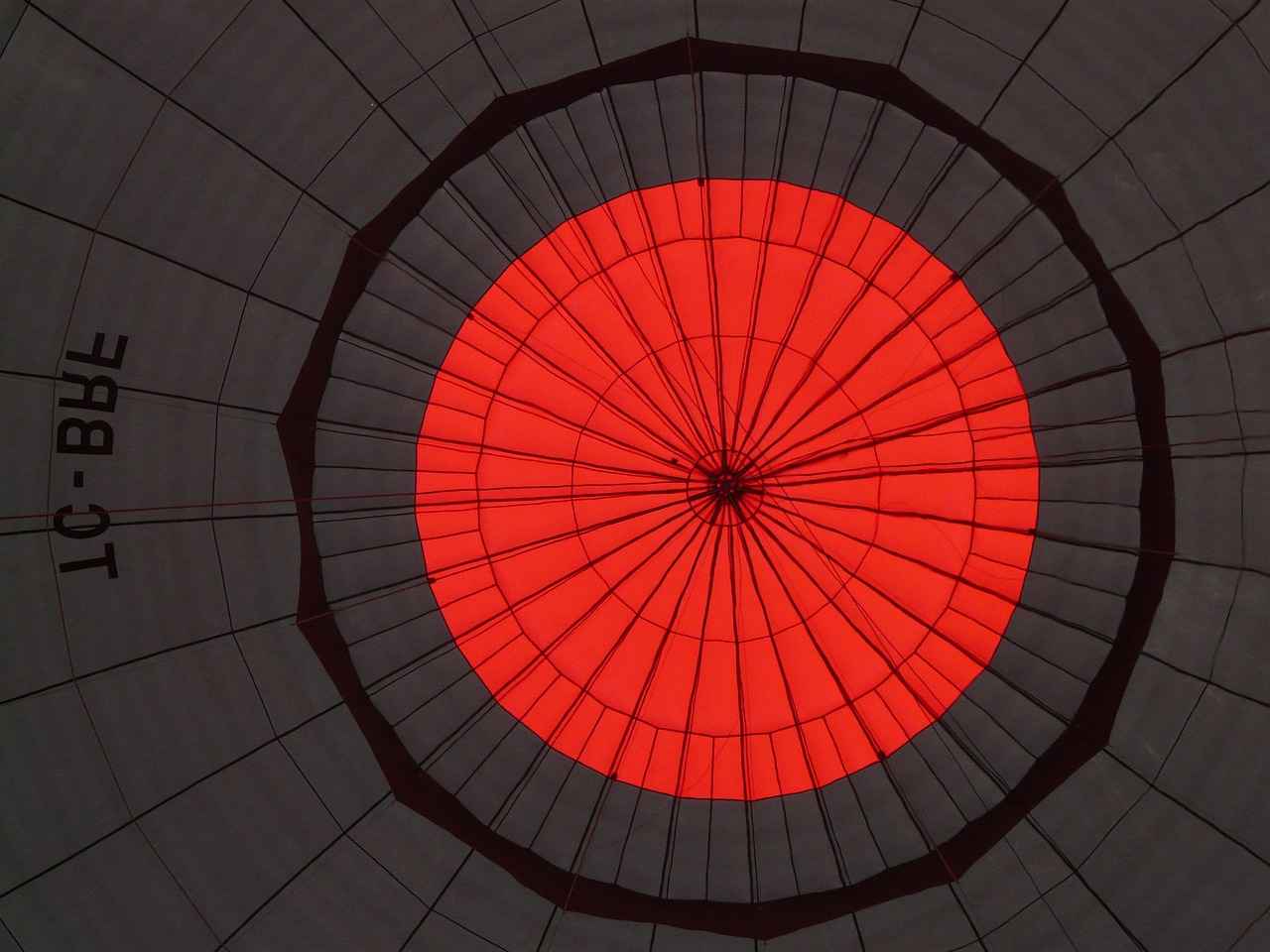
Essential Accessories for Filming
When embarking on a hot air balloon adventure, capturing the breathtaking scenery and exhilarating moments is essential. To enhance your filming experience, having the right accessories is crucial. These accessories not only improve the quality of your footage but also ensure that you can film safely and effectively. Below are some of the most important accessories you should consider bringing along on your hot air balloon ride.
- Mounts: Utilizing various mounts can greatly improve the stability of your shots. Consider using a chest mount or a helmet mount to keep your camera secure while allowing for hands-free filming. A gimbal mount can also help in stabilizing your footage, especially during windy conditions.
- Extra Batteries: Hot air balloon rides can last for several hours, and you don’t want to miss capturing a moment due to a dead battery. Always bring at least one or two extra batteries to ensure your camera stays powered throughout the flight.
- Protective Cases: Protecting your camera from potential damage is vital. A sturdy, waterproof case will not only safeguard your camera from the elements but also from accidental drops. This is especially important when filming from a height.
- Memory Cards: Ensure you have high-capacity memory cards to store all your footage. Opt for cards with fast write speeds to avoid any lag while recording high-resolution videos.
- Lens Filters: Consider using ND (neutral density) filters to control light exposure, especially during bright sunny days. This will help you capture clearer and more vibrant colors in your aerial shots.
- Remote Control: A remote control can provide you with the ability to start and stop recording without having to touch the camera. This is particularly useful when you want to avoid camera shake.
- Cleaning Kit: Dust and moisture can accumulate on your lens during the flight. A small cleaning kit with microfiber cloths and lens wipes will ensure your footage remains clear and sharp.
In addition to these accessories, it’s also important to familiarize yourself with your camera’s settings and capabilities. Knowing how to adjust for different lighting conditions and angles can significantly enhance your filming quality. Remember, the goal is to capture the stunning vistas and unique experiences of your hot air balloon ride, so being well-prepared with the right tools will make all the difference.
By investing in these essential accessories, you can ensure that your filming experience is not only enjoyable but also yields high-quality footage that you can cherish for years to come.
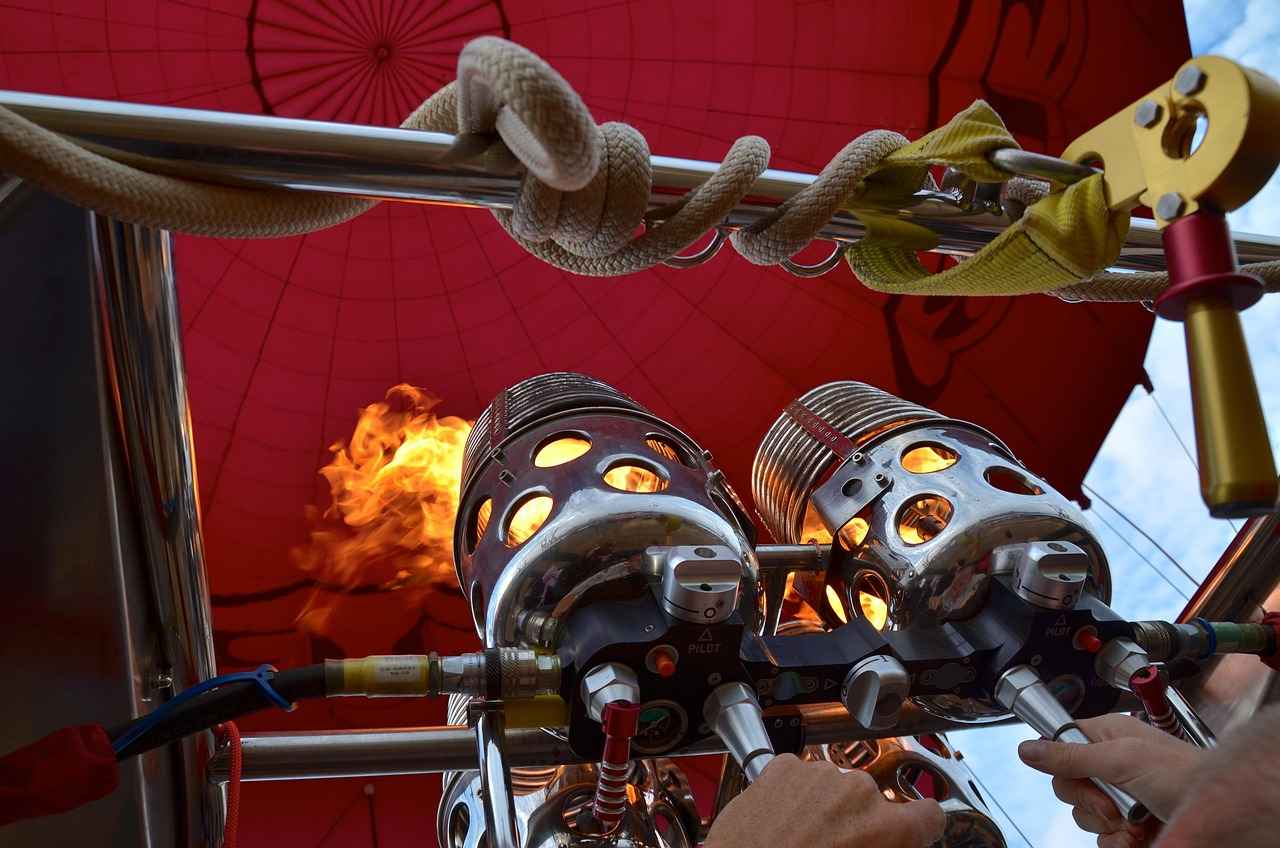
Preparing Your Camera Before the Flight
When it comes to capturing the breathtaking experience of a hot air balloon ride, proper camera preparation is essential. Before you ascend into the sky, taking the time to ensure that your action camera is ready will greatly enhance your filming experience. Here’s a detailed guide on how to prepare your camera effectively.
Filming from a hot air balloon presents unique challenges, including changing light conditions and the potential for vibrations. By preparing your camera properly, you can avoid common pitfalls and ensure that you capture stunning footage that reflects the beauty of your surroundings.
- Charge Your Camera: Before your flight, make sure your camera battery is fully charged. A fully charged battery will prevent interruptions during filming.
- Check Memory Storage: Ensure that your memory card has enough space to store high-resolution videos. It’s advisable to use a card with a high write speed to handle 4K footage.
- Adjust Camera Settings: Familiarize yourself with your camera’s settings. Adjust the resolution to the highest quality and set your frame rate based on your filming needs. For smooth aerial footage, consider using 30fps or higher.
- Stabilization Features: Enable any stabilization features your camera may have. This will help reduce the impact of vibrations during the flight, resulting in smoother footage.
- Mounting Options: Choose the right mount for your camera. A stable mount will help minimize movement and provide a steady shot, ensuring your footage is clear and professional.
Once you have set up your camera, perform a final check:
1. Verify that the camera lens is clean.2. Test the camera by recording a short clip.3. Check that all accessories, such as extra batteries and mounts, are securely packed.
As you prepare for your flight, consider the lighting conditions. The early morning or late afternoon provides the best natural light for filming. Be ready to adjust your settings if you notice changes in light as you ascend.
While preparing your camera, don’t forget about safety. Use a protective case or housing to shield your camera from wind and potential impacts. This will not only safeguard your equipment but also ensure that you can focus on filming without worrying about damage.
In summary, preparing your camera before a hot air balloon flight is crucial for capturing high-quality footage. By following these steps, you can ensure that your filming experience is enjoyable and that your resulting video is nothing short of spectacular. Remember, a well-prepared camera is the first step towards creating memorable aerial footage that you can cherish for years to come.
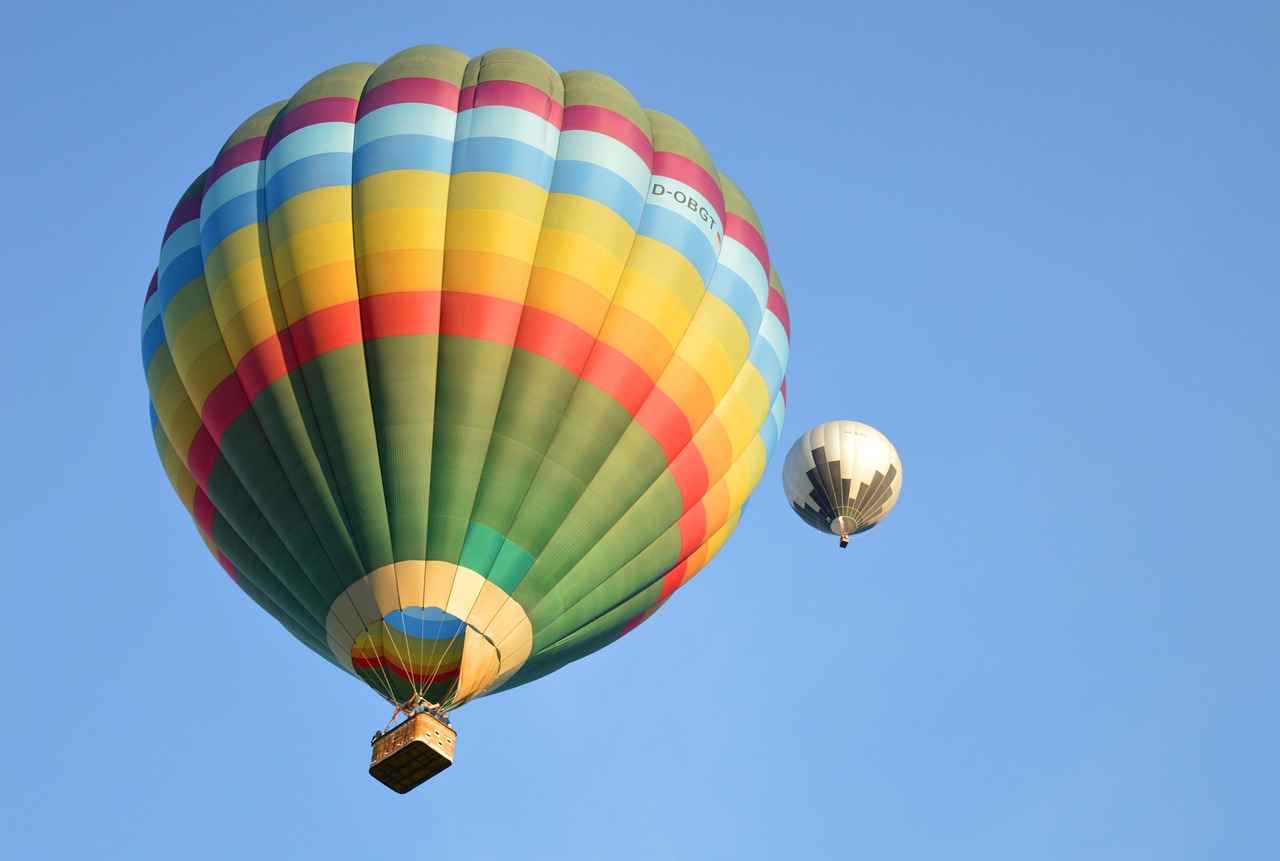
Optimal Camera Settings for Aerial Shots
Capturing breathtaking aerial footage during a hot air balloon ride requires a keen understanding of optimal camera settings. The right adjustments can elevate your video quality significantly, ensuring that the stunning landscapes below are showcased perfectly. Here, we will delve into the essential settings and considerations you should keep in mind to enhance your filming experience.
Why is Resolution Important?
Resolution is a critical factor in determining the clarity of your footage. For aerial shots, it’s advisable to shoot in 4K resolution if your camera supports it. This high resolution allows for greater detail and flexibility during editing, enabling you to crop or zoom in without losing quality. If storage space is a concern, consider shooting in 1080p, which still provides excellent quality while using less memory.
Frame Rate: How Does It Affect Your Footage?
The frame rate you choose can dramatically influence the smoothness of your video. For most aerial shots, a frame rate of 30 frames per second (fps) is sufficient, offering a good balance between smooth motion and file size. However, if you plan to capture fast-moving scenes or wish to create slow-motion effects in post-production, consider using 60 fps or higher. This will allow for more dynamic footage and enhanced visual storytelling.
Field of View: What Should You Choose?
The field of view (FOV) setting determines how much of the scene is captured in your frame. A wider FOV can be beneficial for aerial shots, as it allows you to capture more of the stunning landscape. However, be cautious, as an overly wide FOV can introduce distortion. A medium field of view is often a safe choice, providing a good balance between capturing expansive views and maintaining image quality.
Exposure Settings: Finding the Right Balance
When filming from a hot air balloon, lighting conditions can change rapidly. Utilizing manual exposure settings can give you greater control over your footage. Adjust the ISO to a lower setting (around 100-200) in bright conditions to minimize noise, while a higher ISO may be necessary during dawn or dusk. Additionally, consider using ND filters to manage light intake and achieve the desired shutter speed, which should ideally be double your frame rate for optimal motion blur.
White Balance: Keeping Colors Accurate
Maintaining accurate colors is crucial for aerial footage. Setting your camera’s white balance manually can help avoid the color shifts often caused by changing light conditions. For sunny days, a setting around 5500K works well, while overcast conditions may require adjustments to around 6000K. Experiment with these settings to find the best match for your specific environment.
Additional Tips for Aerial Filming
- Always check your camera settings before takeoff to ensure everything is configured correctly.
- Consider using a gimbal for stabilization, especially in windy conditions.
- Practice your filming techniques on the ground to become familiar with your camera’s controls.
By understanding and adjusting these camera settings, you can significantly enhance the quality of your aerial footage during a hot air balloon ride. Each element, from resolution to exposure, plays a vital role in capturing the beauty of your surroundings. Take the time to experiment with these settings and find what works best for your unique filming conditions.
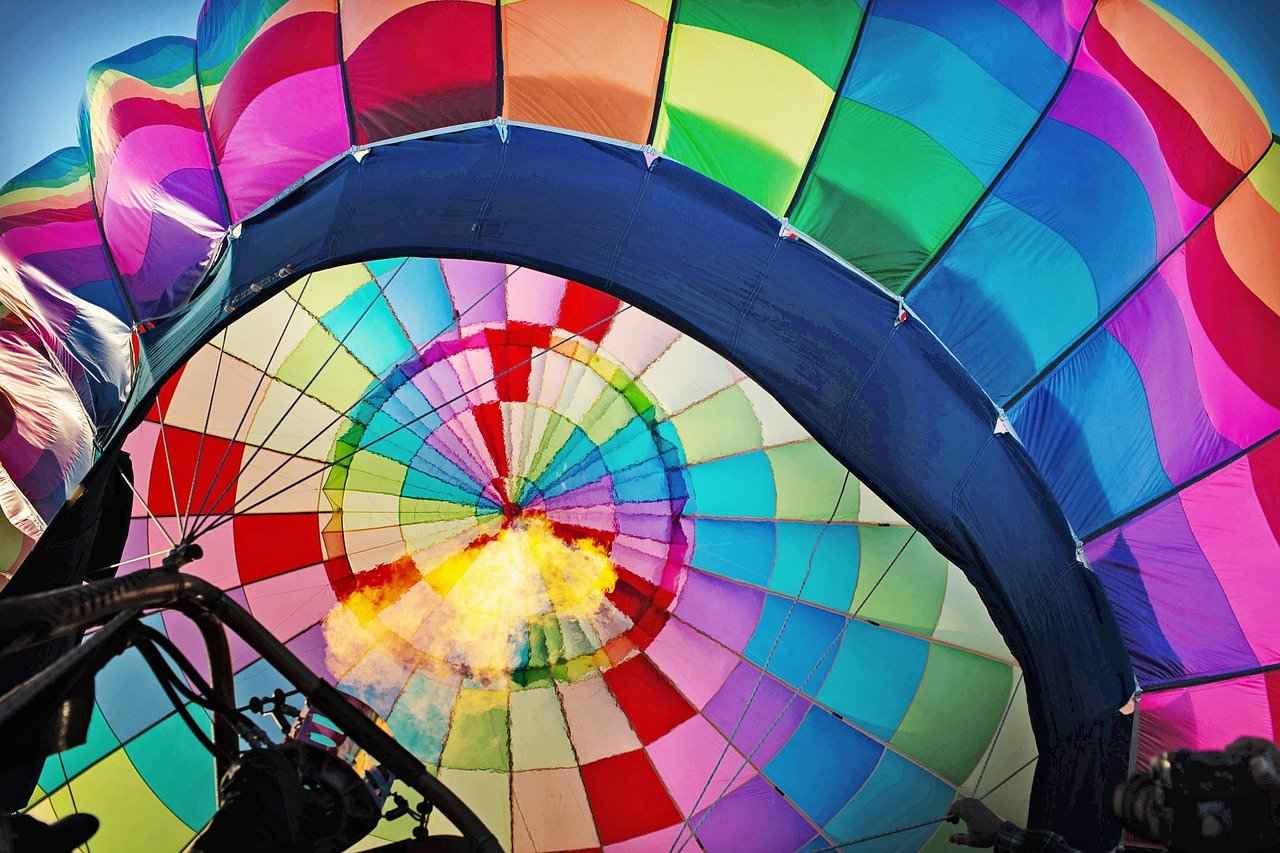
Best Mounting Techniques for Stability
When it comes to capturing breathtaking footage during a hot air balloon ride, stability is of utmost importance. The gentle sway and movement of the balloon can lead to shaky video, which detracts from the overall quality of your footage. To ensure that your videos are smooth and visually appealing, exploring various mounting techniques is essential. Here, we will delve into effective methods to minimize vibrations and enhance the stability of your camera setup.
Stability plays a crucial role in delivering high-quality footage. Shaky videos can make the viewer feel disoriented and detract from the stunning visuals of the landscape below. By employing effective mounting techniques, you can ensure that your footage is not only smooth but also captures the beauty of your surroundings without distraction.
One of the most effective tools for achieving stability is a gimbal. This device uses motors to counteract the movements of the balloon, allowing your camera to remain level and steady. Gimbals are especially beneficial when filming in dynamic environments, as they adapt quickly to changes in motion.
Another critical factor in achieving stability is the surface to which you mount your camera. Consider using a tripod mount or a suction cup mount that can be securely attached to the balloon’s basket. Ensure that the mount is rated for the weight of your camera and can withstand the wind and vibrations experienced during the flight.
A chest mount can provide a unique perspective while maintaining stability. This technique allows for hands-free filming and captures the excitement of the ride. However, it’s essential to ensure that the mount is securely fastened and does not obstruct your movement or the camera’s view.
If you’re looking for a more advanced setup, consider using a stabilizing rig. These rigs often incorporate multiple points of articulation, allowing for greater flexibility and stability. They can absorb shocks and vibrations, ensuring that your footage remains steady even during turbulent moments.
Where you position your camera can significantly affect stability. Mounting your camera closer to the center of the balloon’s basket can help reduce the effects of movement. Additionally, try to avoid placing the camera near the edges, where vibrations are more pronounced.
Before the balloon ascends, conduct a thorough test of your camera setup. Check for any loose connections, ensure that your mounts are secure, and review your camera settings. This preparation can save you from potential issues during the flight and ensure that you’re ready to capture stunning footage.
Incorporating anti-vibration pads under your camera mount can help absorb shocks and further stabilize your footage. These pads are designed to dampen vibrations and can be an effective addition to your setup, especially in a moving environment like a hot air balloon.
By implementing these various mounting techniques, you can significantly enhance the stability of your footage during a hot air balloon ride. Whether you opt for a gimbal, chest mount, or a stabilizing rig, the key is to ensure that your camera is secure and well-positioned. With these strategies, you’ll be well on your way to capturing stunning aerial footage that showcases the beauty of your ballooning adventure.
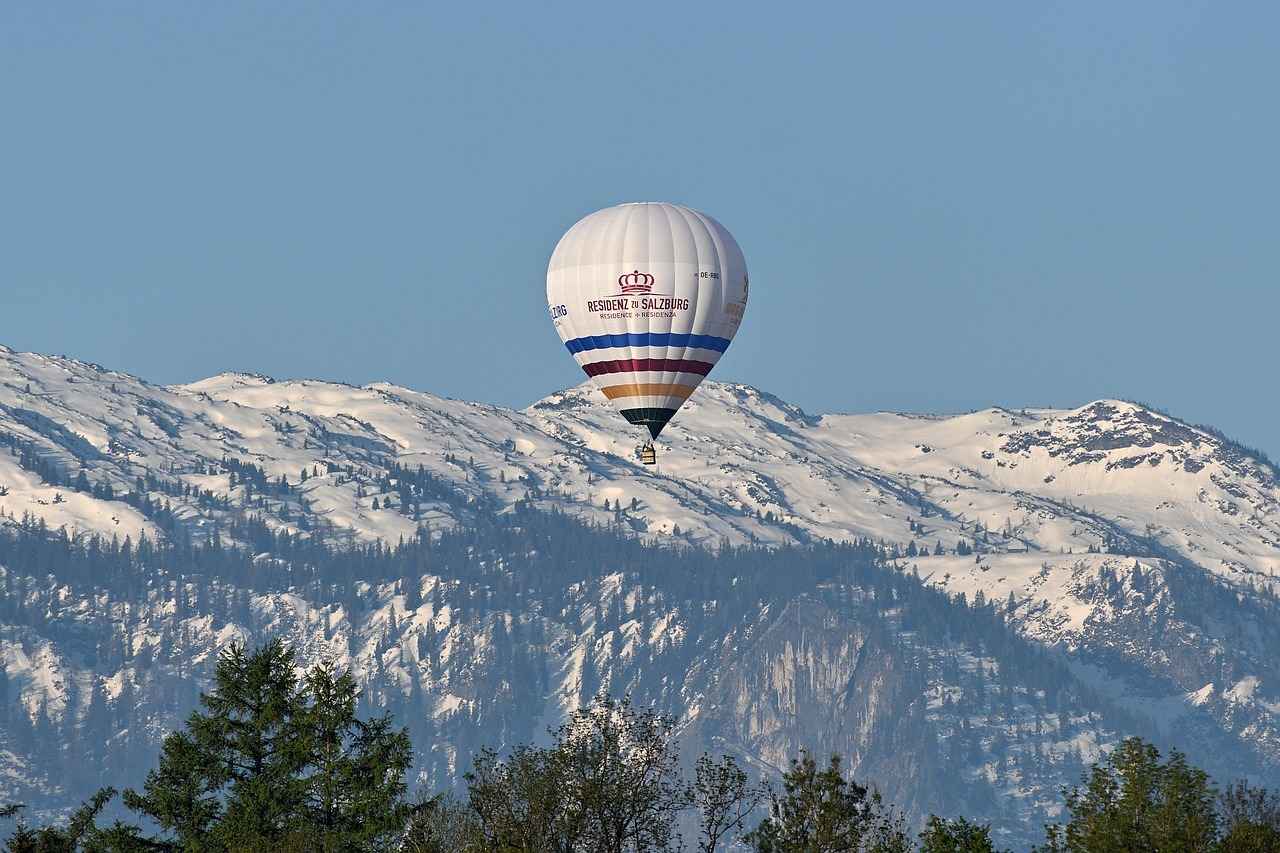
Capturing the Takeoff and Landing
The takeoff and landing phases of a hot air balloon ride present unique filming opportunities that can yield breathtaking footage. These moments are often filled with excitement and anticipation, making them perfect for capturing the essence of the experience. To effectively film these phases while ensuring your safety and that of others, follow these guidelines.
During the takeoff, the balloon is inflated and begins its ascent, providing a dynamic backdrop for your footage. The landing phase, on the other hand, showcases the gentle descent and the balloon’s eventual touch down. Both moments are rich with visual storytelling potential, offering a chance to capture the beauty of the landscape and the thrill of the ride.
To capture these moments effectively, consider the following camera positioning techniques:
- Front-facing Angle: Position your camera at the front of the basket to capture the view as you ascend. This angle allows you to film the landscape stretching out below you.
- Side Angle: A side-mounted camera can provide a different perspective, showcasing the balloon’s movement and the surrounding scenery.
- Close-up Shots: Use a handheld camera to capture the expressions of fellow passengers and the pilot during takeoff and landing. These personal moments add depth to your footage.
While capturing these thrilling moments, safety must be your top priority. Here are some essential safety tips:
- Secure Your Equipment: Ensure that your camera and any mounts are securely fastened to prevent them from falling during the flight.
- Follow Pilot Instructions: Always listen to your pilot regarding when it is safe to film. They may have specific guidelines based on weather conditions and the balloon’s movements.
- Be Mindful of Your Surroundings: Pay attention to the space around you while filming, especially during landing when the balloon may sway or shift.
Adjusting your camera settings can significantly enhance your footage. Here are some tips:
- Use a Wide Field of View: This setting allows you to capture more of the stunning landscape during takeoff and landing.
- Higher Frame Rates: Filming at a higher frame rate can create smooth slow-motion effects, particularly during the landing phase.
Once you have captured your footage, editing is crucial to create a polished final product. Consider the following:
- Cutting for Impact: Use quick cuts to emphasize the excitement of takeoff and the serene beauty of landing.
- Incorporating Sound: Adding ambient sounds from the balloon and the environment can enhance the viewer’s experience, making them feel as if they are part of the adventure.
In summary, capturing the takeoff and landing phases of a hot air balloon ride can yield stunning footage that encapsulates the thrill and beauty of the experience. By positioning your camera thoughtfully, prioritizing safety, and utilizing effective filming and editing techniques, you can create memorable visual stories that resonate with viewers.
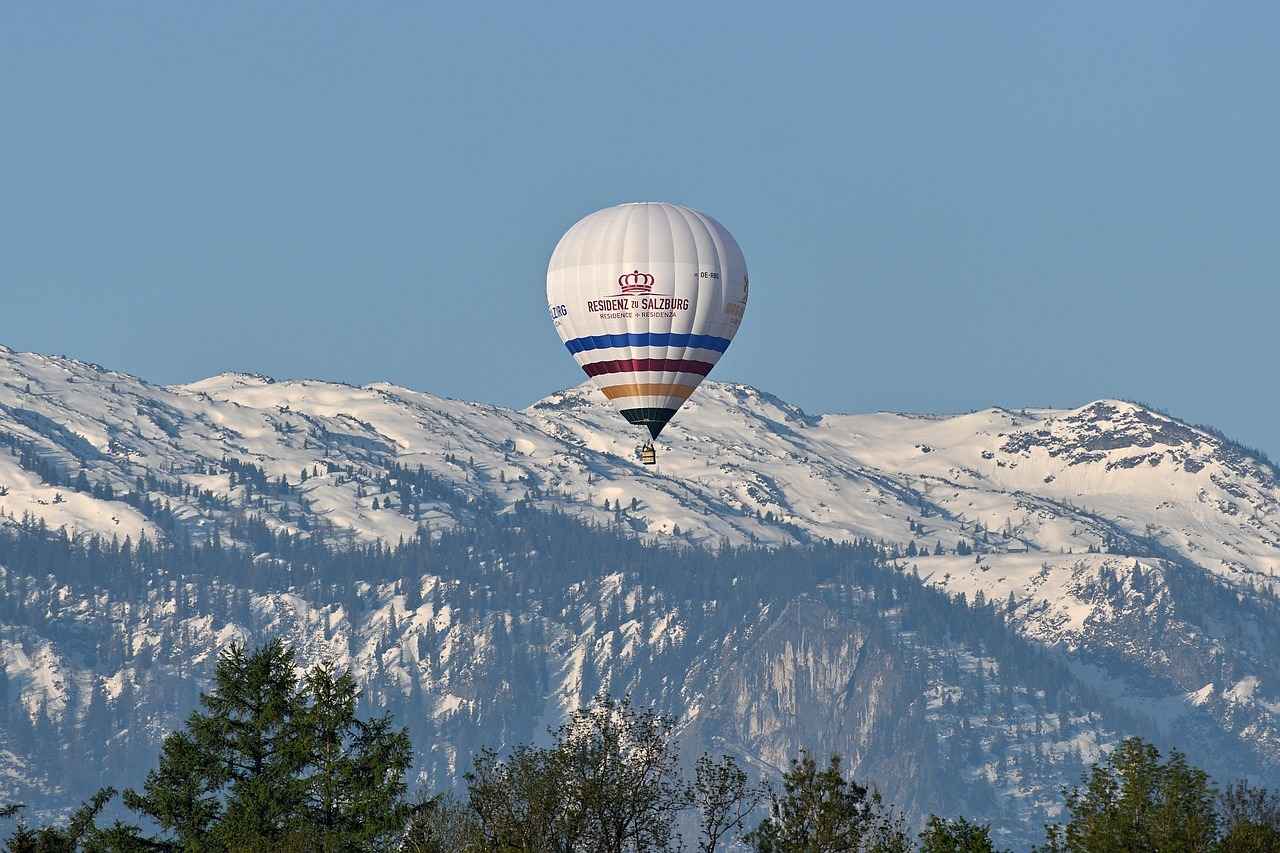
Filming Techniques for Stunning Aerial Views
When it comes to capturing the breathtaking beauty of a hot air balloon ride, filming techniques play a crucial role. Utilizing specific methods can significantly enhance the visual appeal of your footage, allowing you to showcase the stunning landscapes below. In this section, we will explore essential tips for panning, tilting, and framing shots, ensuring you capture the most mesmerizing aerial views.
Panning involves moving the camera horizontally to follow a subject or reveal a landscape. This technique is particularly effective in hot air balloon filming, as it can create a sense of motion and depth in your footage. To achieve smooth panning:
- Use a tripod or stabilizer: This minimizes camera shake and ensures fluid movement.
- Practice your motion: Before the flight, practice panning with your camera to develop a steady hand.
- Plan your shots: Identify key points of interest in the landscape to pan across during your flight.
Tilting refers to moving the camera vertically, which can dramatically alter the perspective of your shots. This technique is ideal for capturing the height of the balloon and the vastness of the scenery below. To effectively use tilting:
- Start slow: Begin with gentle tilts to avoid abrupt changes that can distract viewers.
- Combine with panning: For dynamic shots, tilt while panning to create a more immersive experience.
- Frame your shots: Consider the rule of thirds when tilting, ensuring that the horizon is positioned attractively within the frame.
Framing is essential for guiding the viewer’s eye and enhancing the storytelling aspect of your footage. Here are some tips for effective framing:
- Use natural elements: Incorporate trees, mountains, or other features into your frame to create depth.
- Experiment with angles: Don’t be afraid to shoot from different angles; a low angle can make the balloon appear more majestic.
- Consider foreground interest: Adding elements in the foreground can enhance the sense of scale and make your footage more engaging.
The time of day can greatly affect the colors and lighting in your footage. Early mornings or late afternoons provide soft, golden light that can enhance the beauty of your shots. To make the most of natural light:
- Golden hour: Aim to film during the golden hour for warm, flattering light.
- Watch for shadows: Be mindful of how shadows can impact your shots; avoid filming when the sun is directly overhead.
- Adjust settings: Use your camera’s settings to compensate for varying light conditions, ensuring your footage remains vibrant.
By incorporating these filming techniques—panning, tilting, and framing—you can elevate your hot air balloon footage to new heights. These methods not only enhance the visual appeal but also create a narrative that resonates with viewers. Remember to practice these techniques ahead of your flight, and you’ll be well on your way to capturing stunning aerial views that truly reflect the beauty of your experience.
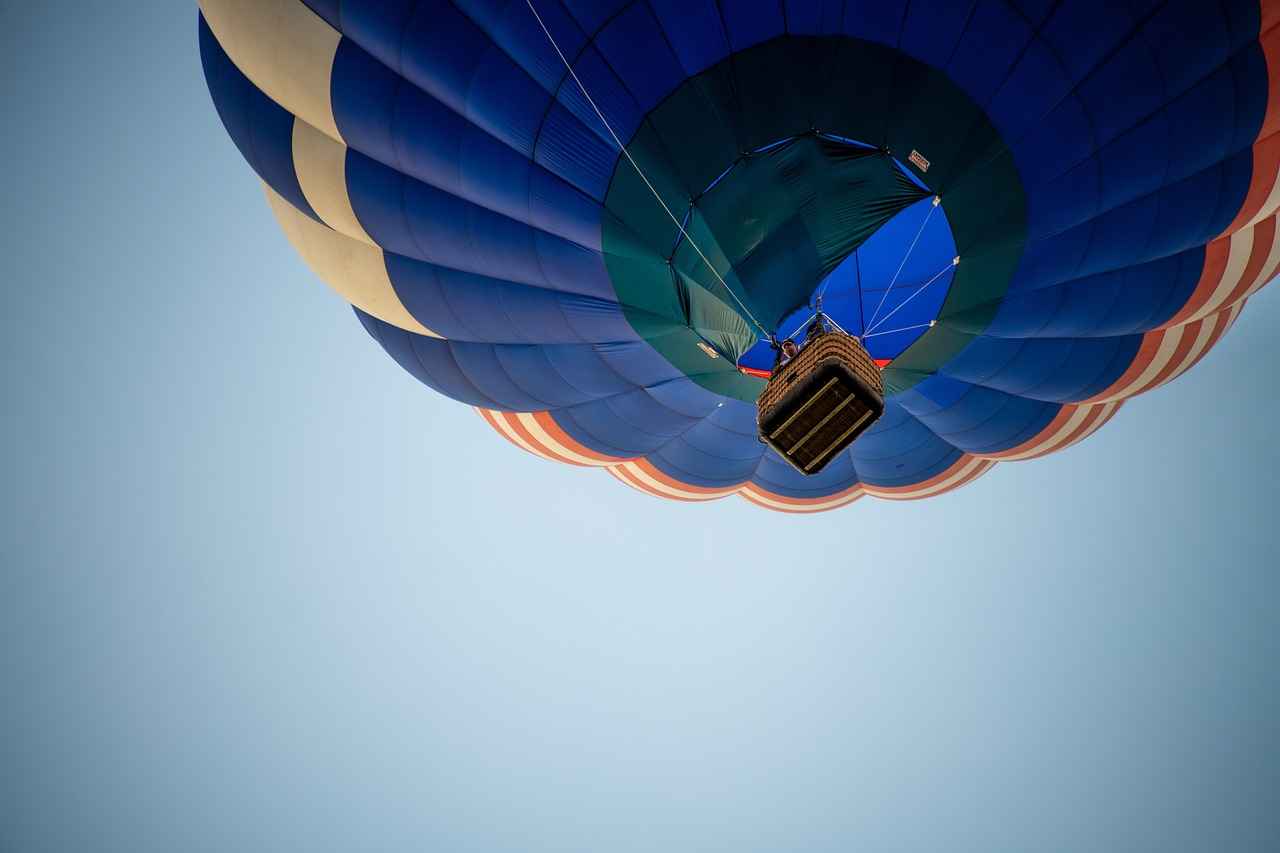
Editing Your Hot Air Balloon Footage
Post-production is an essential phase in the filmmaking process, particularly when it comes to capturing the breathtaking beauty of a hot air balloon ride. This is where your raw footage transforms into a cohesive and visually stunning video that can evoke emotions and tell a compelling story. Understanding the nuances of video editing can significantly enhance the quality of your final product.
Why is Editing Important for Your Footage?
Editing allows you to refine your footage, ensuring that every moment captured contributes to the overall narrative. It’s not just about cutting out the unnecessary parts; it’s about enhancing the viewer’s experience. By employing various editing techniques, you can create a sense of flow and continuity, making your audience feel as if they are part of the journey.
Key Editing Techniques to Consider
- Color Correction: Adjust the colors to reflect the vibrant scenery you experienced. This can bring out the beauty of the landscape and sky.
- Transitions: Use smooth transitions between clips to maintain the viewer’s engagement. Techniques such as fades or dissolves can enhance the storytelling.
- Sound Design: Incorporate background music and sound effects that complement the visuals. The right audio can elevate the emotional impact of your footage.
- Cutting for Emotion: Pay attention to the pacing of your edits. Quick cuts can build excitement, while longer shots can evoke a sense of tranquility.
Utilizing Editing Software
Choosing the right editing software is crucial for achieving the desired results. Programs like Adobe Premiere Pro, Final Cut Pro, and DaVinci Resolve offer a range of features suitable for both beginners and experienced editors. Familiarize yourself with the tools available, such as timeline editing, layering, and effects, to make the most of your footage.
Creating a Storyboard
Before diving into the editing process, consider creating a storyboard. This will help you visualize the flow of your video and ensure that you include all the key moments from your hot air balloon ride. A well-planned storyboard can save you time and make the editing process more efficient.
Final Touches for a Professional Look
Once you have assembled your footage, it’s time to add the final touches. This includes adding titles, credits, and any necessary graphics. Ensure that your video has a consistent style and that all elements work together harmoniously.
Sharing Your Edited Footage
After completing your edit, consider how you will share your video. Platforms like YouTube, Vimeo, and social media channels are excellent for showcasing your work. Tailor your video format to suit the platform and engage your audience effectively.
In conclusion, the editing process is where the magic happens. By applying these techniques and tips, you can create a visually stunning representation of your hot air balloon adventure that resonates with viewers and captures the essence of the experience.
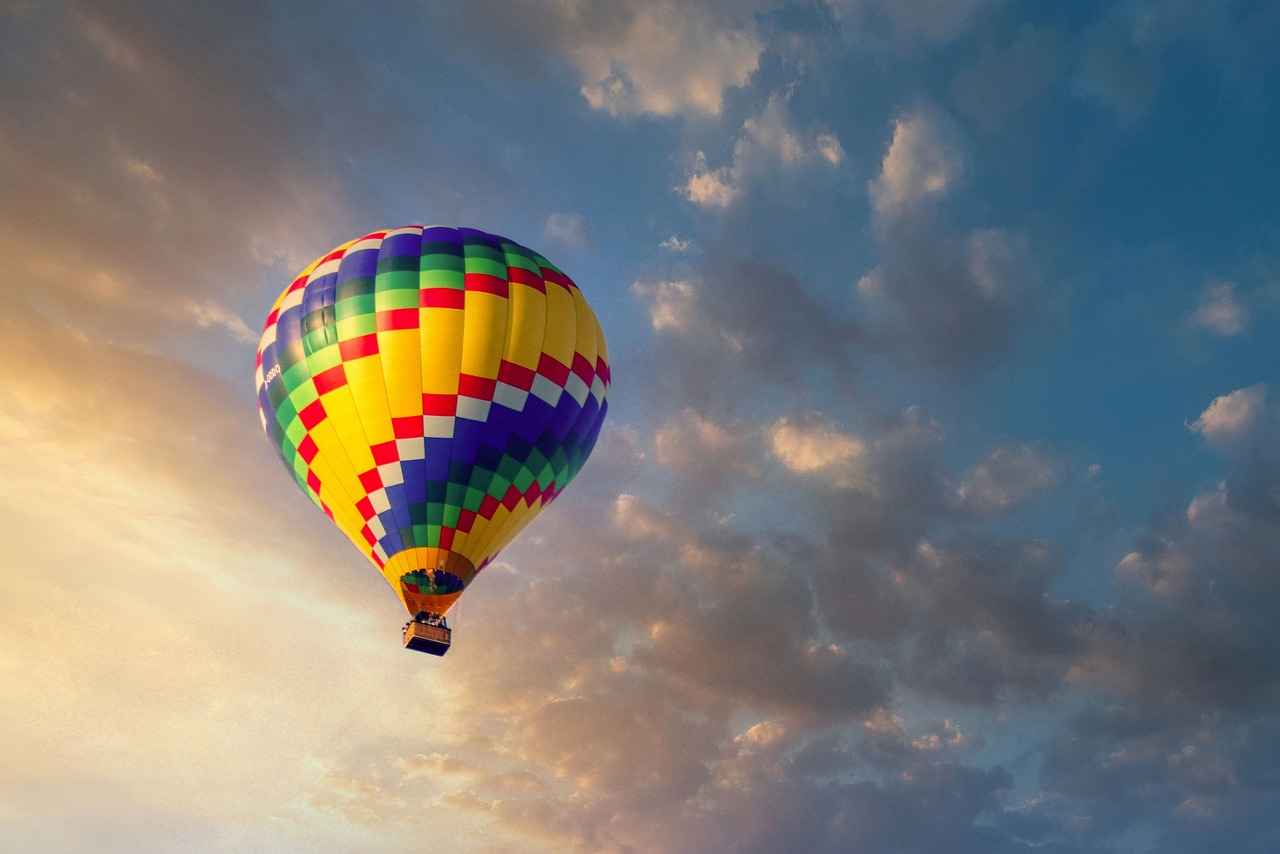
Sharing Your Hot Air Balloon Experience Online
Sharing your hot air balloon experience online is a fantastic way to inspire others and showcase the breathtaking views you’ve captured. With the right approach, you can effectively reach a wider audience and share the thrill of your adventure. Below, we explore the best platforms and strategies for sharing your hot air balloon journey.
- Social Media: Platforms like Instagram, Facebook, and TikTok are ideal for sharing short clips and stunning images. Use hashtags like #HotAirBalloon and #AdventureAwaits to increase visibility.
- YouTube: For longer videos, YouTube is the go-to platform. Create a channel dedicated to your adventures, and optimize your video titles and descriptions with relevant keywords.
- Travel Blogs: If you enjoy writing, consider starting a travel blog. Share detailed narratives alongside your videos and photos to engage readers on a deeper level.
- Vimeo: This platform is perfect for high-quality video sharing. It caters to a more artistic audience, allowing you to present your footage in a more polished manner.
To ensure your content resonates with viewers, consider the following strategies:
- Engaging Thumbnails: Create eye-catching thumbnails that accurately represent your video content. A compelling thumbnail can significantly increase click-through rates.
- Descriptive Captions: Write engaging captions that tell a story. Highlight the emotions and experiences from your hot air balloon ride to draw viewers in.
- Call to Action: Encourage your audience to comment, like, and share your content. Ask questions in your posts to foster interaction.
Building an online presence takes time and consistency. Here are some effective strategies:
- Collaborate with Influencers: Partner with travel influencers or fellow balloon enthusiasts to expand your reach. Collaborations can introduce your content to new audiences.
- Engage with Your Audience: Respond to comments and messages promptly. Building a community around your content encourages loyalty and repeat viewers.
- Utilize SEO Techniques: Incorporate keywords related to hot air ballooning in your video titles, descriptions, and tags. This practice improves your content’s visibility on search engines.
Live streaming can be an exhilarating way to share your hot air balloon ride in real-time. It allows your audience to experience the adventure alongside you. However, ensure you have a stable internet connection and consider safety precautions before going live.
When sharing your video, consider the narrative you want to convey. Here are some tips:
- Storytelling: Share the journey leading up to the flight, the emotions felt during the ride, and the breathtaking views. A well-told story captivates viewers.
- Highlight Unique Moments: Focus on special moments, such as the sunrise or the landing. These highlights can make your video memorable.
In summary, sharing your hot air balloon experience online can inspire others and create a sense of community among adventure seekers. By selecting the right platforms, optimizing your content, and engaging with your audience, you can effectively showcase your incredible journey and encourage others to embark on their own hot air balloon adventures.
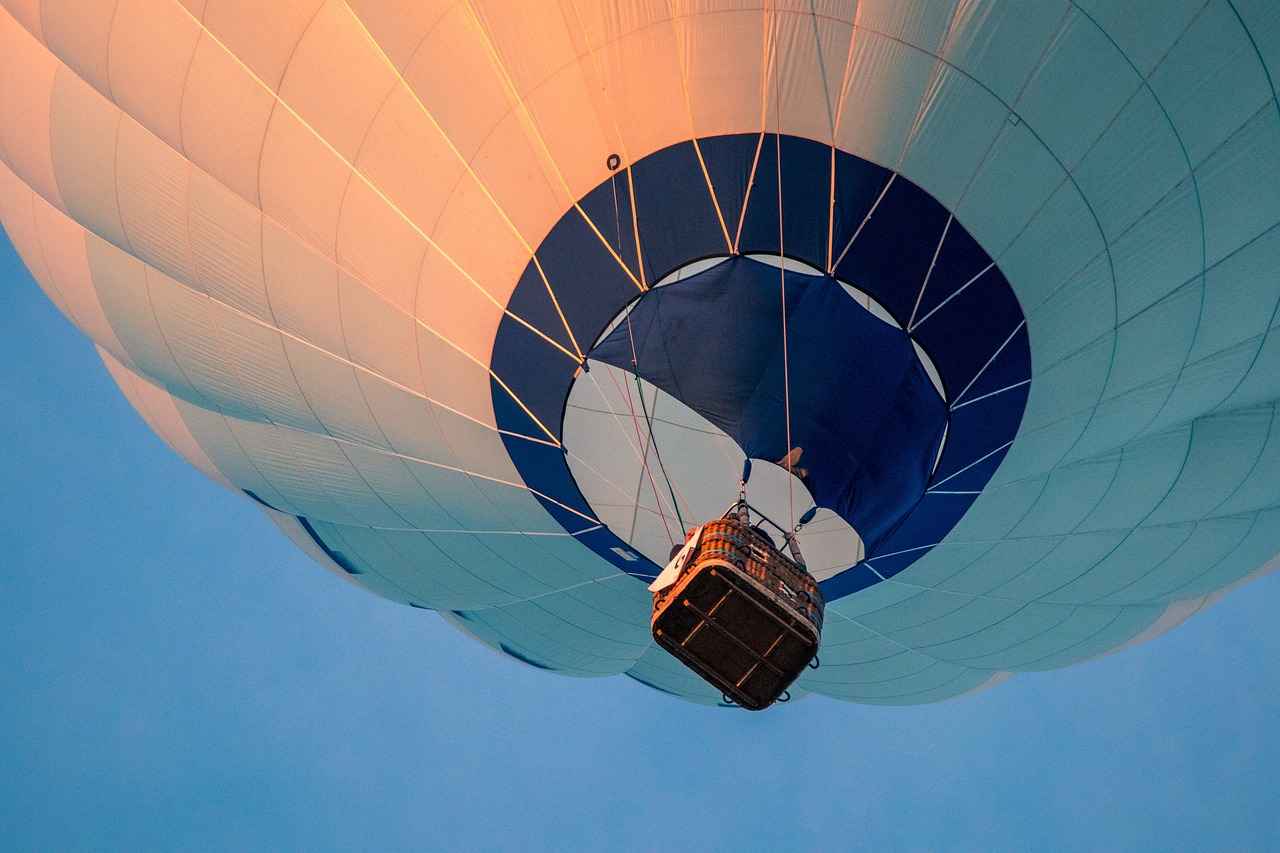
Safety Tips for Filming from a Hot Air Balloon
When embarking on an exciting adventure like filming from a hot air balloon, safety should be your utmost priority. The thrill of soaring high above the landscape can be exhilarating, but it is crucial to take the necessary precautions to ensure a safe and enjoyable experience. Below are some essential safety tips to consider while filming from a hot air balloon.
- Check Weather Conditions: Before your flight, always check the weather forecast. Wind speed, visibility, and precipitation can significantly affect your safety. Ideal conditions include light winds and clear skies.
- Choose a Reputable Operator: Ensure that you are flying with a certified and experienced hot air balloon operator. Research their safety record and read reviews to confirm their reliability.
- Wear Appropriate Gear: Dress in layers and wear comfortable shoes. The temperature can change quickly at altitude, so being prepared for varying conditions is essential.
- Secure Your Equipment: Use proper mounts and harnesses to secure your action camera. Loose equipment can become a hazard during the flight, especially during takeoff and landing.
- Understand the Safety Briefing: Pay close attention to the safety briefing provided by the pilot. They will outline emergency procedures and what to do in case of unexpected situations.
- Keep Your Hands Inside: While it may be tempting to lean out for a better shot, always keep your hands and equipment inside the basket to avoid accidents.
- Limit Distractions: Focus on the flight and your surroundings. Avoid excessive movement or distractions that could compromise your safety or that of others.
- Communicate with the Pilot: Maintain open communication with the pilot regarding your filming plans. They can offer advice on the best times to capture specific shots without compromising safety.
- Have a Safety Plan: Always have a plan for emergencies. Know the locations of landing zones and have a backup plan in case of sudden weather changes.
By following these safety tips, you can ensure that your hot air balloon filming experience is both thrilling and secure. Remember, the key to a successful adventure lies in preparation and awareness. Prioritizing safety not only protects you but also enhances the overall enjoyment of your journey.
In summary, filming from a hot air balloon can yield breathtaking footage, but it is essential to keep safety at the forefront. With the right precautions and mindset, you can capture stunning aerial views while ensuring a safe and memorable experience.
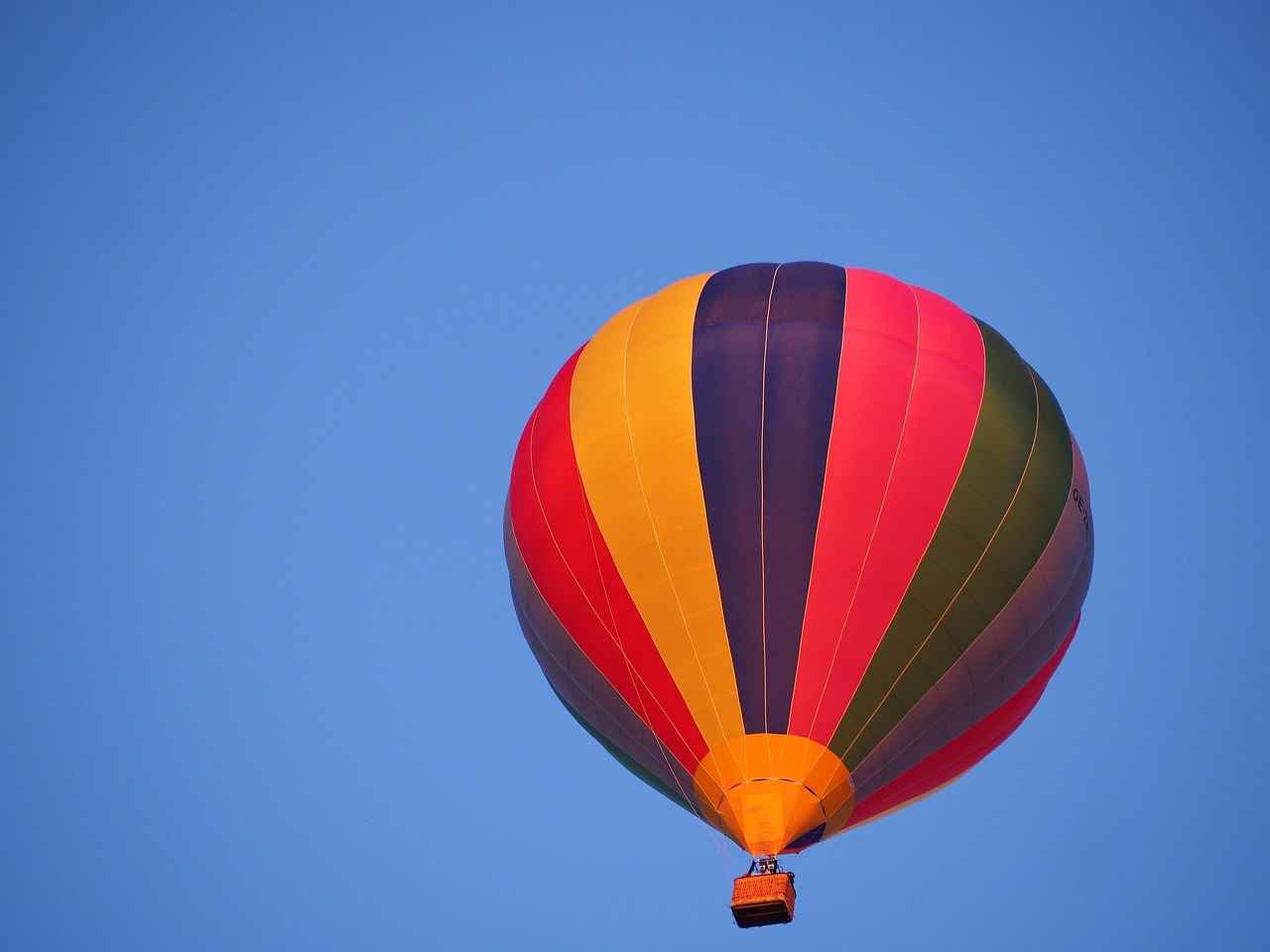
Common Mistakes to Avoid When Filming
Filming a hot air balloon ride can be a breathtaking experience, but it’s essential to be aware of common pitfalls that can hinder the quality of your footage. By understanding these frequent mistakes, you can ensure that your video captures the magic of your adventure in the sky. Here are some of the most prevalent errors filmmakers make and how to avoid them:
One of the most critical aspects of filming is ensuring your camera settings are optimized for the environment. Failing to adjust settings such as resolution, frame rate, and exposure can lead to poor-quality footage. Before your flight, take the time to familiarize yourself with your camera and set it according to the lighting conditions you expect to encounter.
Stability is vital for capturing smooth footage. Many filmmakers make the mistake of using inadequate mounts that cannot withstand the vibrations of the balloon. Always invest in high-quality mounts and consider using a gimbal for additional stabilization to minimize shaky footage.
Spontaneity can be exciting, but without a plan, you might miss out on capturing the most stunning shots. Prior to your flight, outline key moments you want to film, such as the takeoff, mid-air views, and landing. This preparation will help you stay focused and ensure you don’t overlook any significant moments.
Running out of battery mid-flight can be devastating. Many filmmakers underestimate how much battery power is needed for a hot air balloon ride. Always carry extra batteries and ensure your camera is fully charged before takeoff. Consider using a power bank to recharge your camera if possible.
Safety should always come first. Some filmmakers get so caught up in capturing the perfect shot that they forget to secure their equipment properly. Ensure that all gear is safely stowed and that you’re adhering to all safety guidelines provided by the balloon operator.
While it’s important to capture various elements of the experience, fixating on too many details can detract from the overall footage. Instead, focus on key aspects like the panoramic views and the emotions of the experience. This will create a more engaging narrative in your video.
Weather conditions can dramatically affect your filming experience. Filmmakers often overlook checking the weather forecast, leading to missed opportunities or poor visibility. Always check the weather before your flight to ensure optimal filming conditions.
Many filmmakers neglect to review their footage during the ride, which can lead to missed adjustments that could enhance the quality of the video. Use this time to check your shots and make any necessary changes to your settings or angles.
By avoiding these common mistakes, you can significantly improve the quality of your hot air balloon footage. Remember, preparation and awareness are key to capturing stunning visuals that will leave a lasting impression. Happy filming!
Frequently Asked Questions
- What type of action camera is best for filming a hot air balloon ride?
When choosing an action camera, look for one with high resolution, excellent stabilization features, and long battery life. Popular options include the GoPro series and DJI Osmo Action, as they are compact and designed for adventure.
- Do I need any special accessories for filming?
Absolutely! Essential accessories include mounts for stability, extra batteries to avoid running out of power, and protective cases to safeguard your camera during the flight. These items can greatly enhance your filming experience.
- How can I ensure my camera is ready before the flight?
To prepare your camera, make sure it’s fully charged, set the appropriate resolution and frame rate, and double-check all settings. A little preparation can make a big difference in the quality of your footage!
- What are the best filming techniques for aerial views?
For stunning aerial shots, try techniques like panning to capture the landscape, tilting for dramatic angles, and framing your shots thoughtfully. These methods can elevate your footage from ordinary to extraordinary!
- Are there any safety tips I should follow while filming?
Yes! Always prioritize safety by securing your camera and staying aware of your surroundings. Follow the pilot’s instructions and avoid leaning out too far to ensure a safe and enjoyable filming experience.
